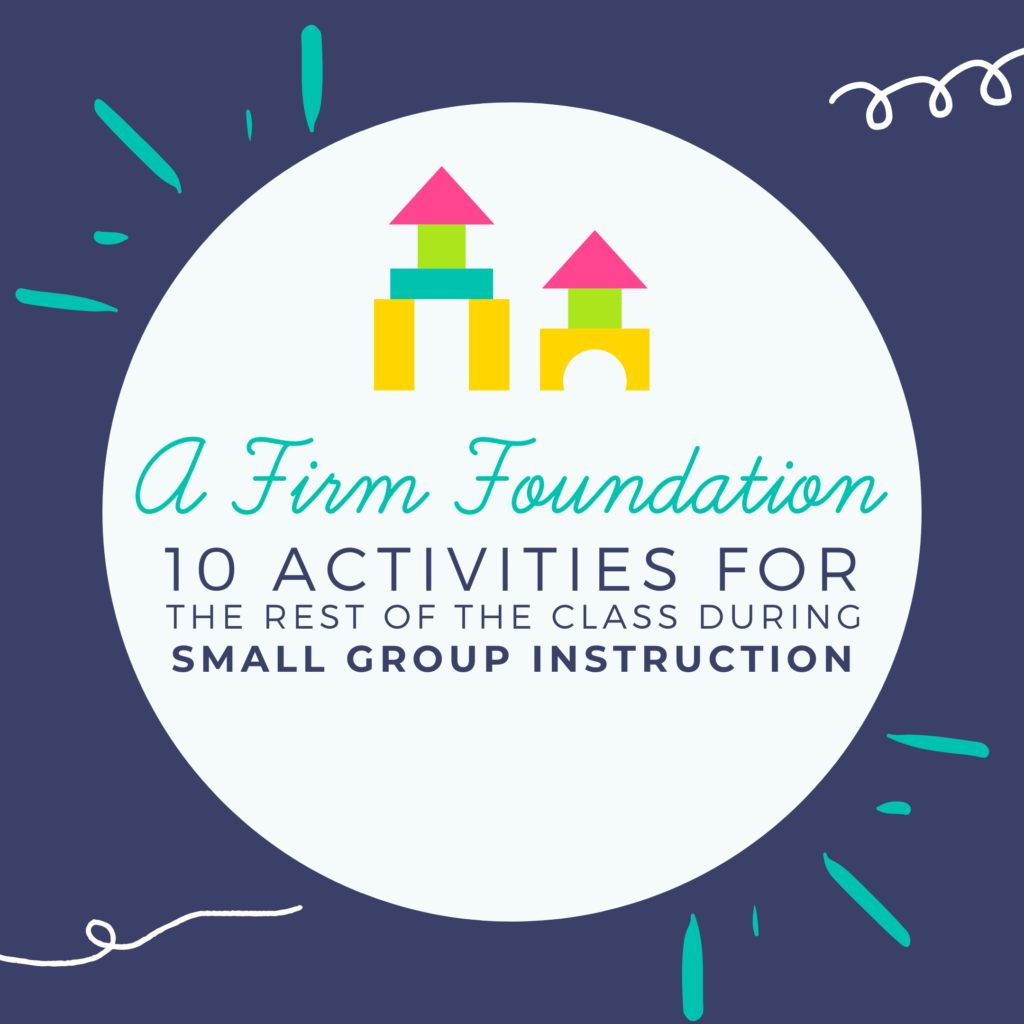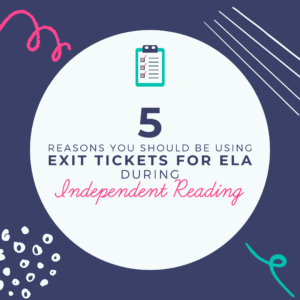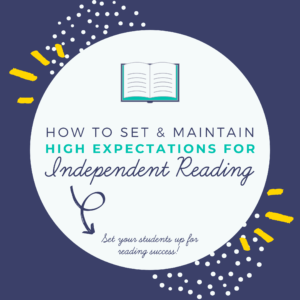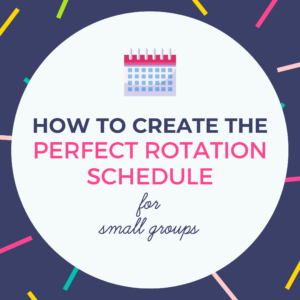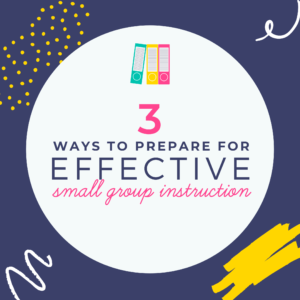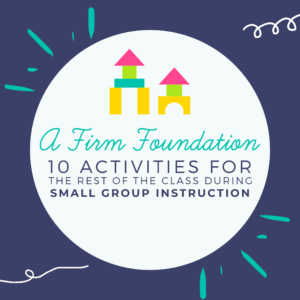There is no tip toeing around the fact that the success of your small group instruction is directly tied to the success of your students’ independence during this time. You will never be able to run an effective small group if you are constantly interrupted by a student outside the group needing help or instructions. The same is true if you are having to constantly stop and give students outside the group reminders about voice level, moving about the room, staying on task, etc.
Set yourself up for success with high expectations for yourself and your students during your small group instruction time!
So, what do you do with the rest of the class while you are working with a math or reading small group?!
10 Independent Tasks During Small Group Instruction
The following 10 tasks are ones that we like to assign the rest of the class while we are working with a small group. You want to be able to give your small group focused attention, and, therefore, the rest of the class needs to be working fully independently during this time.
It is imperative that your students know what is expected of them during this time.
# 1 Independent Reading
Hands down, no questions asked, my favorite thing to have the rest of the class do during reading small groups is independent reading. Kids need independent reading time in class every single day. You know how busy you are outside of school, and our students’ families are just as busy. You can’t count on the fact that every family has the time to enforce independent reading time every night at home.
This is a great time for your students to be practicing a current skill on their own in their own book of choice at their reading level. It’s a true win, win, win situation! Now, keep in mind, you may have to spend some time building your students’ independent reading stamina before you can jump right into long periods of uninterrupted reading time.
Don’t worry about students getting distracted as they flex in and out of small group and independent reading. This may be an issue early on, but they will quickly adjust to hearing you quietly teach in the background and having their peers move to and from the small group instruction area.
#2 Response to Reading
You can have your students respond to their reading in so many different ways. It can be a quick write, a journal entry, an exit ticket, etc. This is a great way for your students to continue practicing what your are teaching in whole group on their own in their book of choice.
This is a great follow-up to their time spent reading independently. I often have my students begin their reflection writing as I work with the last small group of the day.
This will also allow you to assess your students’ progress on any given reading literature skill. Hello data for standards based grading!
#3 Choice Menus
We love a good choice menu! There are so many reasons to love choice menus! To begin, they allow students to pick and choose how they want to interact with a text. Any time you can give your students choice, you automatically increase your student engagement!
Choice menus are typically broken up into sections based on four types of learning. This allows your students to choose activities that speak to who they are as a learner. As a result, your students are more effectively able to show you what they know!
The choice menus can be based off a book or novel you are reading as a whole class, or based off a book a student is reading independently.
#4 Writing
When you are giving your small group instruction, the rest of the class can be working on their current writing. Students can use this time time to work on their current writing piece. It seems like students can always use more time for their writing projects! Let them use the time while you’re running small groups to get that extra time. Make sure you keep your students’ stamina in mind. As with independent reading, it may take some time for students to build independent writing stamina.
#5 Work with Greek and Latin Roots
There is so much value in learning Greek and Latin roots. This knowledge will carry over into every subject level and will continue to aid your students in future grade levels. Allow your students time to work on Greek and Latin roots in their interactive notebooks or using an online program while you are working with your ELA small groups. With consistent practice, you will be surprised how well this helps students as they are reading and discovering new words on their own!
#6 Handwriting
Ok. Can we all just admit students need all the help they can get with handwriting? Are you even a teacher if you haven’t been asked by a friend or spouse, “How can you even read that?!” Give your students time to slow down and focus on their handwriting. Their future teachers will thank you!
#7 Small Group Prep Work
If your students already know what book they will be discussing in small group, have them do a little preparation. This independent preparation will allow them to come to small group instruction ready to hit the ground running. You can use a simple strategy like the Fab 4. This will depend on how you run your small groups!
#8 Fact Practice
There are so many options for online fact practice. While you are giving math small group instruction, the rest of the class can be working on fact practice at their level. This allows for even more differentiation! Your students also get immediate feedback! Whether they are working to master addition, subtraction, multiplication, or division facts, this is a great way to work in more fact practice.
#9 Independent Math Work
Just like students need time for independent reading, they need time for independent math work. While you are giving math small group instruction, the rest of the class can be working on independent work that aligns to the day’s lesson. Again, you will need to keep students’ stamina in mind. You may need to teach strategies for what to do when they get stuck. You can’t have students coming up and interrupting your small group instruction every time they get stuck on a math problem! Prepare your students for this ahead of time!
#10 Math Games
Who doesn’t love games? I mean really?! We are all quite competitive here, so we can’t imagine not enjoying games. Supplying your students with a choice of (relevant!) math games is a great way to give them some fun and light hearted practice in mastering new skills and staying sharp on previously mastered skills! As with all of these activities, ground rules must be set! Giving and maintain clear, high expectations is always key!
A Solid Foundation for Small Group Instruction
We don’t want to live in a house without a firm foundation. We don’t want to work in a building with a crumbling foundation. Set yourself and your students up for small group success with a firm foundation! Set clear, high expectations. Maintain your high expectations. Get ready to watch your students thrive independently so that you can provide high quality small group instruction!

